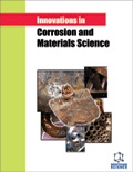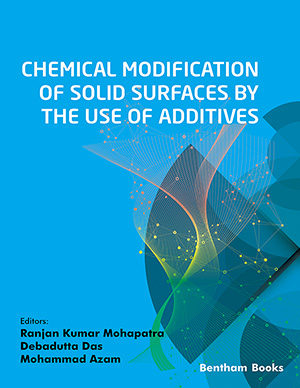Abstract
Background: Body fluids are highly corrosive as they contain chlorides and hydroxides ions, as well as salts, bacteria, proteins and dissolved oxygen. The pH of the body is usually around 7.4, although this value can vary in a range of 4 to 9 after surgery or because of haematomas, inflammations and infections. ASTM F745 (type 316L) stainless steel has been used for load bearing partial and total joint replacements and post trauma reconstructive surgeries. However, long exposure to the aggressive effect of chloride ion present in the human body, may increase the susceptibility to suffer localized corrosion. Although UNS S32750 has greater corrosion resistance to chloride ion, its magnetic characteristics inhibit its use in implantable devices. Nevertheless, this stainless steel could be used in temporary implants and orthodontic appliances such as brackets, wire arches and bands, due to its high resistance to corrosion, the greater mechanical resistance and the high capacity of plastic forming.
Objectives: The objective was to evaluate the susceptibility to localized corrosion in simulated body fluid, in the pH range of 4 to 9. Another objective was to evaluate the cytotoxicity of Cr and Ni present in the chemical composition of both stainless steels. Cytocompatibility was also analysed by seeding cells on the surfaces of both stainless steels.
Methods: Cyclic polariation test was performed to evaluate the susceptibility to localized corrosion in 0.9 wt% NaCl aqueous solution, at pH between 4 and 9, maintained at 37°C. For cytotoxicity evaluation, neutral red, MTT and collagen assays were performed using UMR-106 cell line. Cytocompatibility was analysed by seeding UMR-106 cells on the surfaces of both stainless steels.
Results: F745-SS was more susceptible to suffer localized corrosion than UNS S32750. Although it showed a tendency to develop transpassive reactions at low pH, galvanostatic tests did not reveal the onset of localized corrosion. The results from the cytotoxicity assays indicated that no adverse effects were observed. UMR-106 osteoblastic cells showed high viability, however, a slight reduction in the collagen production was observed. The cytocompatibility was also satisfactory, since the cells seeded on the surfaces had adequate proliferation.
Conclusion: F745-SS is more susceptible to suffer localized corrosion than UNS S32750 in the pH range between 4 and 9. UNS S32750 showed an extensive passive region, however, transpassive reactions were observed at lower pH. On the other hand, no cytotoxic effects were promoted by both stainless steels, although a slight reduction in collagen production was observed. Cells seeded on F745-SS and UNS S32750 surfaces had an acceptable proliferation, without evidence of changes in their morphology.
Keywords: Biomaterials, stainless steels, localized corrosion, transpassive reactions cytotoxicity, cytocompatibility, proliferation.
[http://dx.doi.org/10.2174/1877610801002010040]
[http://dx.doi.org/10.1007/978-94-011-0157-8_5]
[http://dx.doi.org/10.1007/s11661-002-0109-2]
[http://dx.doi.org/10.1016/j.matdes.2005.05.018]
[http://dx.doi.org/10.1016/S0142-9612(00)00410-5 PMID: 11456061]
[http://dx.doi.org/10.22203/eCM.v004a01 PMID: 14562250]
[PMID: 19516081]
[http://dx.doi.org/10.1016/S1044-5803(02)00320-0]
[http://dx.doi.org/10.1149/1.1393307]
[http://dx.doi.org/10.1002/jbm.820230908 PMID: 2777835]
[http://dx.doi.org/10.1002/jab.770040105 PMID: 10148344]
[PMID: 20803434]
[http://dx.doi.org/10.1179/1743284715Y.0000000017]
[http://dx.doi.org/10.1002/jbm.b.30002 PMID: 15116408]
[http://dx.doi.org/10.1016/j.corsci.2010.11.010]
[http://dx.doi.org/10.1016/S0889-5406(97)70276-2 PMID: 9228844]
[http://dx.doi.org/10.1023/A:1011295115612 PMID: 15348274]
[http://dx.doi.org/10.1016/j.msec.2004.08.030]
[http://dx.doi.org/10.1016/j.biomaterials.2008.09.011 PMID: 18922574]
[http://dx.doi.org/10.1088/1468-6996/11/1/014105]
[PMID: 19106437]
[PMID: 12071606]
[http://dx.doi.org/10.1016/j.ijpharm.2004.09.018 PMID: 15620877]
[http://dx.doi.org/10.1016/j.toxlet.2005.07.001 PMID: 16111842]
[http://dx.doi.org/10.1016/j.msec.2011.12.018]
[http://dx.doi.org/10.1677/joe.0.1580377 PMID: 9846167]
[http://dx.doi.org/10.1179/mst.1992.8.8.685]
[http://dx.doi.org/10.1179/mst.1993.9.7.545]
[http://dx.doi.org/10.3390/ma7075268 PMID: 28788129]
[http://dx.doi.org/10.1016/S0013-4686(02)00841-1]
[http://dx.doi.org/10.1002/jbm.a.32684 PMID: 20128010]
[http://dx.doi.org/10.1016/0010-938X(92)90011-Q]
[http://dx.doi.org/10.1149/1.1837327]
[http://dx.doi.org/10.1016/j.electacta.2003.12.043]
[http://dx.doi.org/10.1002/maco.201609394]
[http://dx.doi.org/10.1016/j.corsci.2013.04.033]
[http://dx.doi.org/10.20473/j.djmkg.v44.i1.p7-11]
[http://dx.doi.org/10.1007/s12034-014-0078-2]
 9
9






